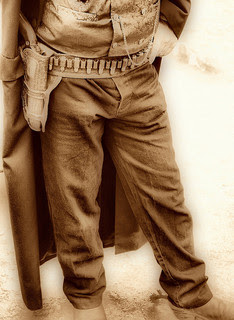I love Johanna Penn's website, The Creative Penn. Not only does Johanna write fabulous books, but she is the author of hundreds of articles on writing that you can read, for free, on her site. And I highly recommend her blog.
Recently Johanna wrote an article about what to do if your book isn't selling as well as you'd like. Since I've been asked this question too, I give my 2 cents as well as share what Johanna had to say.
1) Make your book available as an ebook
I think this is great advice. Johanna mentions that she doesn't make a print version of her books available anymore because she found it wasn't worth it, and that's perfectly valid, but most authors do try and make a paper version available to their readers since some folks strongly prefer to read a paper book, even if it costs significantly more.Also, having print copies of your book available can come in handy since some review sites only accept print copies.
2) Have a professionally designed cover
Compare your cover with the covers of books that are selling well in your genre. You want yours to be in the same ballpark--as similar to each of them as they are to each other.3) Have your book professionally edited
Ideally you would hire a professional line editor or copy editor but, minimally, I think you need to get at least two other people to read your manuscript for errors in logic (eg, calling the same character different names) and typos. Johanna also mentions putting your manuscript aside for a time so you can come back to it with fresh eyes.I find using a text-to-speech program to read back what I've written helps me catch a multitude of errors, from typos to awkward constructions.
4) Make sure you've categorized your book correctly
It can be difficult to know how to categorize your story. Is it a horror? Scifi? Fantasy? Urban Fantasy? Young Adult? Romance? It's difficult when a book can fall under all these categories. Which should you choose?My critique group has been enormously helpful in this regard. Your readers can help you categorize your work appropriately.
Johanna suggests finding three to five authors who write books similar to yours and then looking at how they categorize their books.
5) Optimize your Amazon sales page.
Johanna suggests using quotations from reviews and make sure that you give the book's 'hook'. What's a hook? Here's an example, it's the hook for Indiana Jones and the Raiders of the Lost Ark:Archeologist and adventurer Indiana Jones is hired by the US government to find the Ark of the Covenant before the Nazis. (Raiders of the Lost Ark, IMDB)I've also heard this called a tag line.
6) Experiment with price
Johanna writes:Most ebooks are under $9.99, and a lot of fiction is under $7.99, with many indie books being under $5.An entire book--books even!--could be written on this, but that's a great one paragraph summary.
7) Continually put out new work
Hands down, the best way to market a book is to write more books, especially if your book is part of a series. Johanna writes:The more books you have available, the more virtual shelf space you have, the easier it is for people to discover you. Plus if a reader finds one they like, they may buy them all so you make more per customer.
8) Promote your book
This is one of the reasons writer's build a platform. If you have a Facebook page, blog, twitter account, newsletter or mailing list then you're halfway there. This is a HUGE topic and I don't want to dash off some glib advice.Don't constantly bombard your community with news about your new book--that doesn't work and turns readers off--but definitely do announce that you have a new book coming out and perhaps run a promotion for the first few days or weeks. This will help get the word out about your book and will reward your loyal readers, the ones who read your blog and/or subscribe to your newsletter.
9) Submit your book to review sites
Johanna discusses this in great detail and gives wonderful suggestions how to get Amazon reviewers to review your work.It can be difficult to find book blogs that will review an independently published book, but you can do it, just keep your eyes open for opportunities. Also, check out the Book Blog Directory.
10) Give it time
Johanna's title was: Are you working your butt off? (grin)Dean Wesley Smith advocates putting your book out on the market and then forgetting about it. Yes, certainly, do the best job you can--which means doing a professional job--but then don't fuss over sales. Write another book. Learn more about the art and craft of writing and the business of writing.
Johanna writes:
I absolutely believe that you can be a great writer and make an income from writing.Johanna goes on to say that this doesn't mean you'll get rich and success will likely only come with time, perhaps a LOT of time. And it won't be easy.
I have to believe that for you because I believe it for me, and I have left a stable job and steady income to take a chance on being an author-entrepreneur. I’ve been on this path since 2007 when I decided to write my first non-fiction book, so I am 5 years into working my butt off to change my life.
That said, I hope you enjoy the journey. :-)
I encourage you to read Johanna Penn's article: Help! My Book Isn’t Selling. 10 Questions You Need To Answer Honestly If You Want To Sell More Books. She includes copious links to helpful articles.
Other articles you might like:
- 7 Tips On How To Get Your Guest Post Accepted
- Want Help With Editing? Try Free Editing Programs
- Amazon Ranks Authors In Terms Of Their Book Sales
Photo credit: Dawn Ashley




